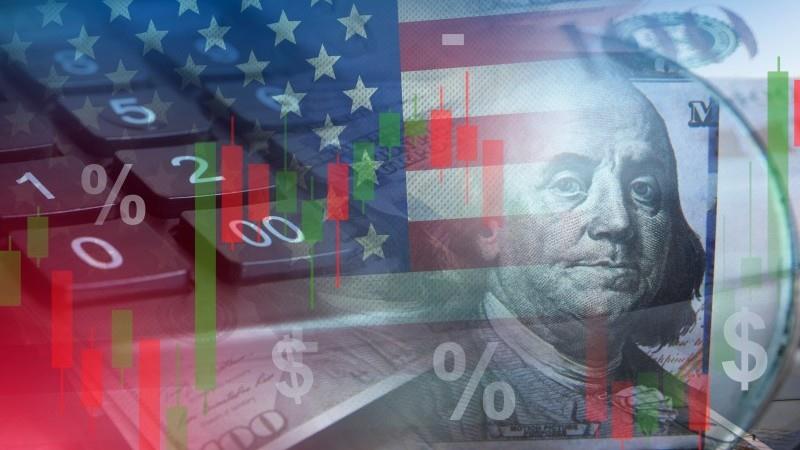
Rates Spark: Still Steeper Curves
Tariffs are complicated, as they cut two ways. The price rise risk is bad for bonds, while the threat to economic activity is good for bonds. When the US first enacted tariffs on Mexico on 1 February 2025, there was a clear reaction from Treasuries – to go for lower yields, alongside a stronger US dollar. This time, the early 25% tariff-on-autos announcement, resulted in a clear rise in yields, alongside a somewhat weaker US dollar. So what gives? Basically, tariff news can have either effect. We noted this when we went through the market reaction on Mexico/Canada tariffs – don't expect the same reaction every time, as there is no perfect way to react to the imposition of tariffs.
Earlier this week we noted an expectation for the 10yr to range trade between 4.25% and 4.35%. The lower bound represented the level we got to after the recent FOMC meeting. We described the outcome of the FOMC at the time as a one-day trade, which it was. On the following two days, intra day it had a go lower, but each time it ended back up at 4.25%. The 4.35% area then represented the upper end of a trading range that had obtained broadly in the past month. The (unexpected) early tariff announcement shocked a break above 4.35%, at least initially. No shock there. It's simply Treasuries pointing to the price risk that comes from tariffs, especially when they are 25% (not 10%).
We still have 2 April as a key day next week, as this is when we at least get the first main iteration of the reciprocal tariffs. Treasuries will likely be minded to wait for that before making any further big jumps. That said, PCE inflation and University of Michigan inflation expectations on Friday do keep the sticky inflation narrative front and centre into the end of the trading week.
US curves steepen via the long end, EUR curves still more via the short endThe US curve bear steepened as 10y Treasury yields rose towards 4.4% (initially) in the wake of Trump's tariff announcements. The EUR curve also steepened, but here it was more the rates markets' initial bullish reaction to the tariff headlines was faded at the back end, while the pricing in of European Central Bank cuts proved more sticky at the front end. The implied probability of a rate cut in April has now crept to 75%. The market is also starting to price in a chance – though only small so far – that the ECB could take the depo rate even below 2% for some time.
France's Villeroy reiterated the argument that all else equal, higher longer rates constitute a tightening in financial conditions. A look at the latest bank lending growth data on Thursday also showed an only careful improvement in monetary conditions as our economists point out – the ECB is still not stimulating the economy. Although it was too early and difficult to say what the central bank will do in April, the ECB's vice president de Guindos did point out that he was still more optimistic on inflation while the risks to growth are clearly on downside. For the ECB the next inflation release with preliminary eurozone data upcoming on Tuesday will be an important input in clearing the path to a potential further cut. Already this Friday we will get first indications from Spain, France, and Belgium alongside the ECB's surveyed inflation expectations of consumers.
From this perspective the EUR curve steepening could have further to run with the long end still feeling the macro and supply impact of the EU's and especially Germany's ambitious spending plans. We think one scenario that could end the steepening is a spill-over from the US – if data were to significantly weaken and/or risk assets to sell off more meaningfully.
So far that is not happening, and the market is not discounting any recession fears with the SOFR strip bottoming out above 3.5%. With Friday's core PCE deflator expected to still show 0.3% month-on-month in February and the likely inflationary impact from upcoming tariffs, the market has little reason to price a more dovish Fed. This Fed expectation also puts a floor under longer yields for now. Should it drop, we think it could also spill over and also pull down longer EUR rates.
Friday's events and market viewThe data highlight for EUR rates markets will be the first preliminary inflation reading for March out of France and Spain ahead of the data for the bloc next Tuesday. The ECB will also release consumer inflation expectations which are not expected to change much, and if anything, to slightly decline in the 1y horizon. We will also get final consumer confidence data and industrial and services confidence indicators. ECB speakers for the day are Bundesbank's Nagel and Muller.
The US also has data highlights on offer with personal income and spending data as well as the PCE deflator for February. The latter is still expected to show a month-on-month core inflation reading of 0.3%. The final University of Michigan consumer confidence index rounds off the releases for the day. Fed speakers are Barr and Bostic on banking and housing policy.
In primary markets Italy will auction 5y and 10y bond as well as two floating rate securities for a total of up to €9bn.

Legal Disclaimer:
MENAFN provides the information “as is” without warranty of any kind. We do not accept any responsibility or liability for the accuracy, content, images, videos, licenses, completeness, legality, or reliability of the information contained in this article. If you have any complaints or copyright issues related to this article, kindly contact the provider above.






















Comments
No comment